Please do your own research, I’m not responsible for what you consume.
Understanding the natural world is a seemingly ceaseless unfolding of knowledge. Every time I think I’ve “understood” a plant to a sufficient degree I find a new seam which unfurls into a new, deeper appreciation.
Today, we’ll talk about Silene dioica, or Red Campion in English vernacular (the flowers are clearly pink or purple!)
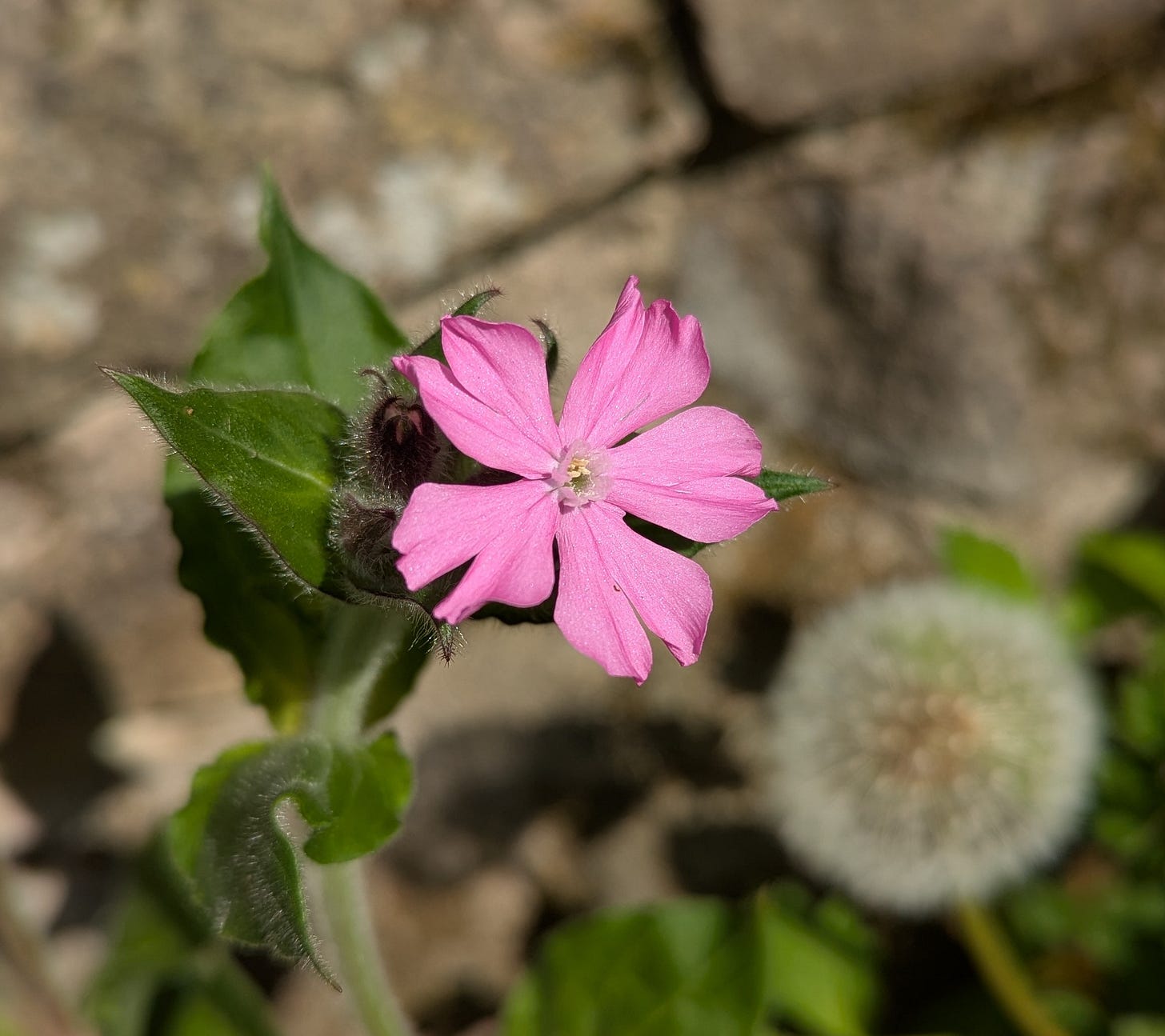
Silene dioica is one of the first plants to re-merge in my garden after the grim half-light of British winter. I’ve come to depend on the green rosette of peach-fuzz leaves as a totem of lighter, warmer days.
Towards later Spring, Red Campion launches skywards on thin but rigid stems. These stems bear urn-shaped pink flowers that flare out dramatically for pollinators.
A Red Campion plant is male or female (dioecious, like its Latin namesake). They depend on insect pollination which doesn’t seem a problem in my garden. The female flowers set seed and dry out. Later in the summer, there’s a very distinctive sounding period where the seeds cascade onto the soil at the slightest disturbance.
So this is how I’ve come to know Red Campion; not as a botanist but as an old familiar friend, by sight and touch and sound.
As it turns out, this old friend is also edible.
I’ve been trying to discover whether Silene dioica is edible for at least a year. As readers might now, eventually a plant will wilt beneath my hungry maw and when I recently came across a copy of Stephen Facciola’s exhaustive Cornucopia II, I had a feeling my old friend would succumb:
Silene dioica - Red campion. Young leaves are added to pistic, like those of S. alba and S. vulgaris. They are boiled for several minutes, drained, then sauteed with butter, garlic and small pieces of lard. Pistic is eaten as an ancient rite of spring in parts of northern Italy, Europe - PAOLETTI
“PAOLETTI” refers to a paper entitled “Pistic, Traditional Food from Western Friuli, N.E. Italy, 1995”.
Silene vulgaris is the rock star of the Campion family. Also known as maidenstears or bladder campion, many Mediterranean countries consume it.
In Cyprus it is agriopapoula and fried gently in olive oil. In Italy it is sculpit or stridolo (amongst other names) and used in risottos. There is widespread use of S. vulgaris in Spain as a leafy vegetable.
My own independent research has unearthed a possible tradition of eating Red Campion as a vegetable in Campoo, Northern Spain. The authors did not record any preparation details and as far as I can tell this is the sole mention.
So, I have at least two references - one more solid than the other - and a vast surplus of beckoning Red Campion rosettes in my garden. Using the “PAOLETTI” paper as a guide…
This is the preparation of a special dish, known as “pistic,” a collection of 56 wild herbaceous meadow and wood plants which are boiled and then sautéed together.
…we can get cooking.
British Suburban Garden “Pistic”
Pick your collection of edible herbaceous and woody plants.
In the photos, I used mostly Red Campion (Silene dioica), a bit of dock leaf (Rumex obtusifolius) and dandelion (Taraxacum officinale), but I’ve also repeated this with some nettle (Urtica dioica), perennial kale (Brassica oleracea), yellow archangel (Lamium galeobdolon) and other opportunistic back garden vegetables.
Optional: cut away the central rib of each Red Campion leaf and don’t use any stems for a smoother eating experience
Wash the leaves if you want, then blanch them for two minutes in boiling water
Drain the water and fry gently with butter or oil (add salt)
I like to add an egg and some kind of legume at this point
Plate up, drizzle olive oil and a bit of pepper on top and enjoy
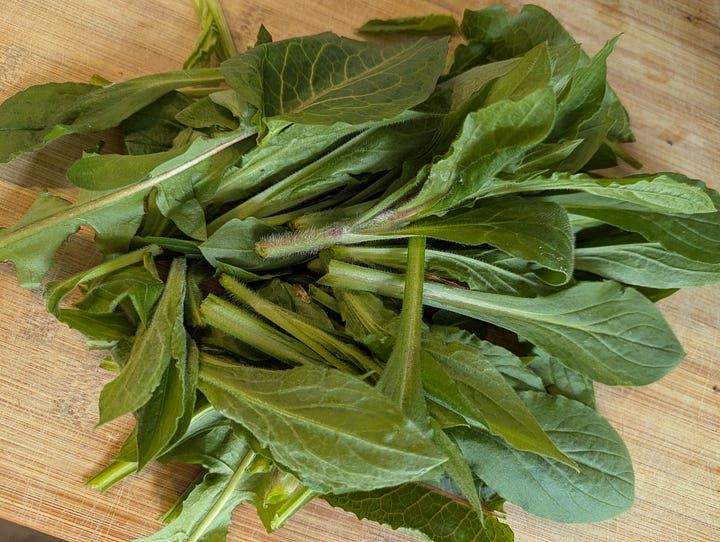
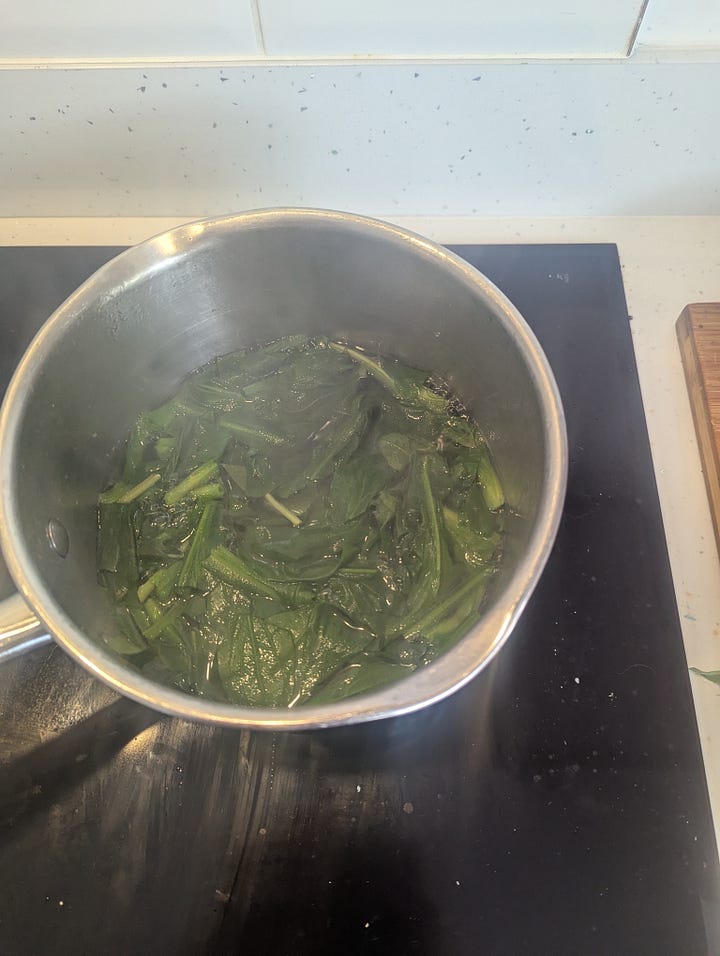
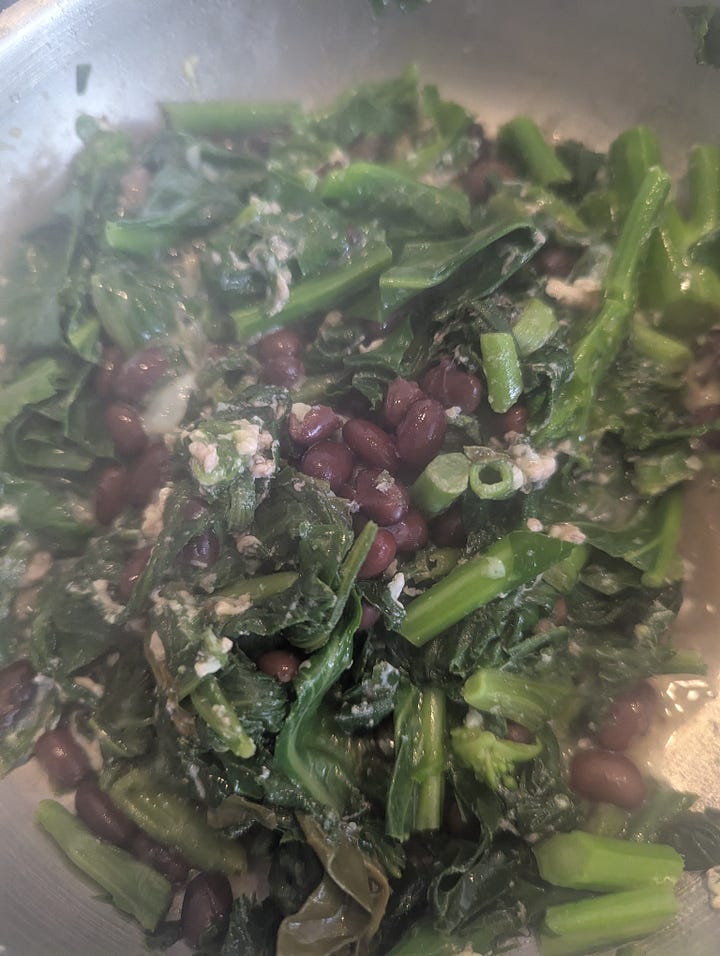
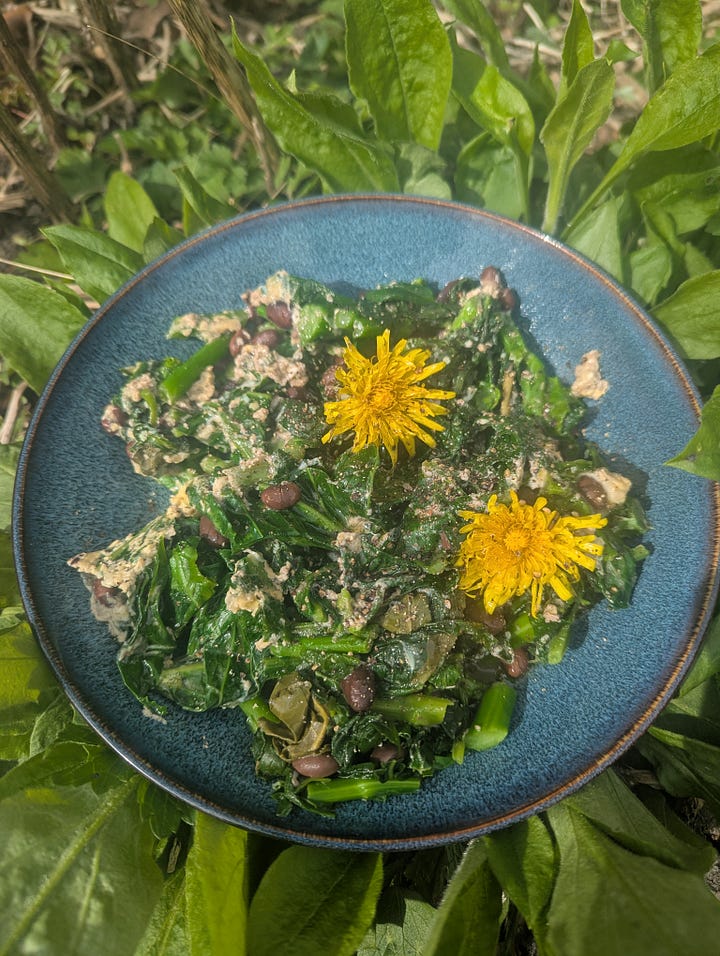
So I’ve put some pretty photos up, but what does sautéing blanched Silene dioica leaves taste like? Some observations:
Raw Red Campion leaves are no good as a fresh salad. If they weren’t hairy, they would resemble dandelion leaves in taste but they lack the crisp mouth-feel.
After blanching, Red Campion leaves taste and feel like boiled, very slightly bitter spinach.
After sautéing, the butter binds to any remaining bitterness and the leaves melt delightfully in your mouth.
I don’t think I’m exaggerating, I was quite staggered at my first forkful (especially compared to the raw leaf).
I’m lucky enough that one of my oldest gardening companions turned out to have a beautiful hidden side.
What “weedy” plants in your garden are you overlooking?
Breeding Aside
Silene dioica probably doesn’t need much improvement in my garden, it well and truly has dominated the flowering space and has a hearty seed bed to fall back on in leaner times. However, plant breeding can just be for fun. I know that Silene dioica quite readily hybridises with the white flowered S. latifolia (syn. S. alba) to create a fertile hybrid. Of course, we can have a go at crossing with S. vulgaris to try and improve the experience of eating the raw leaves. Luckily for us, these two crosses will be easy as they are between single-gendered plants (in other words, just pluck off the male flower of one species and pollinate the female of the other species).
It would be the work of many life times to explore the 900+ Silene species. In my garden, S. coronaria holds a special place in my heart with its electric pink flowers. There’s more than 400,000 unique crosses that can be made between the species of this family. An unknown subset of these will be edible - what are you waiting for?
Final Thoughts
Sometimes, your closest garden plant companions are also very tasty.
I think that Silene dioica should play no second fiddle to Silene vulgaris. In my garden at least, my patch of carefully seed-grown Silene vulgaris fizzled away pathetically while its cousin romped away right nearby. In the few times there has been a drought here, Red Campion cheerfully shrugged it off. I well and truly have a “cultivar” adapted to my microclimate.
If you’re able to get access, its worth going through that list of 53 leaves that make up the traditional Italian pistic. I was shocked to see another three wild species in my garden appear there: Myosotis arvensis, Ranunculus ficaria and R. repens.
That’s right, you read that properly, the field forget-me-not, the lesser celandine and most surprising to me, creeping butter cup. I’ve not come across any common lore about anyone else consuming Myosotis arvensis, but those two Ranunculus are generally avoided. Though now I’m reading about the toxins, they seem to very heat unstable. Perhaps my stretch goal will be to add these three extra friends to my pistic…
at always jokes that I’ll try anything remotely edible and I suppose I’m steadily building a body of evidence for him.Until next time.




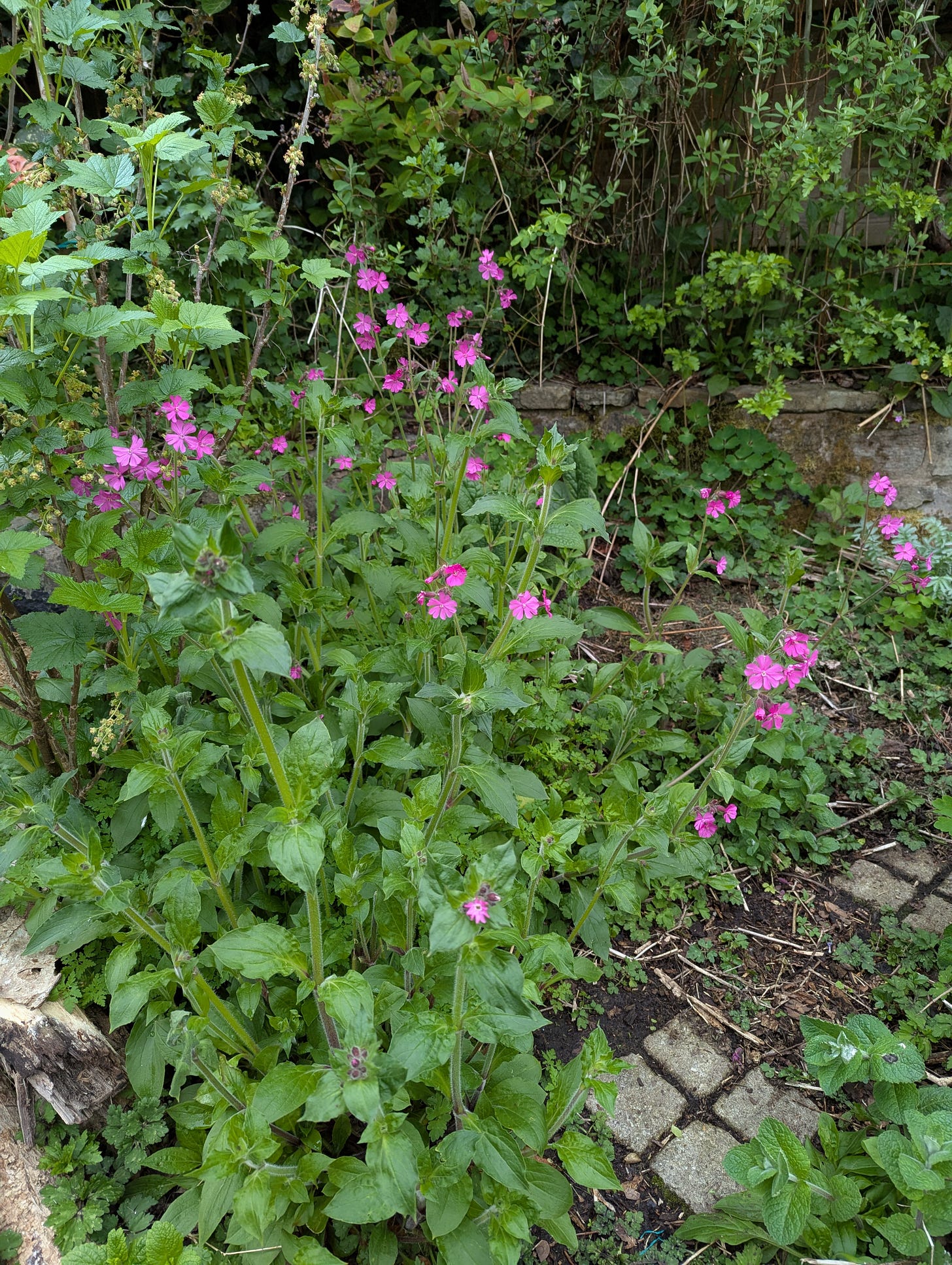
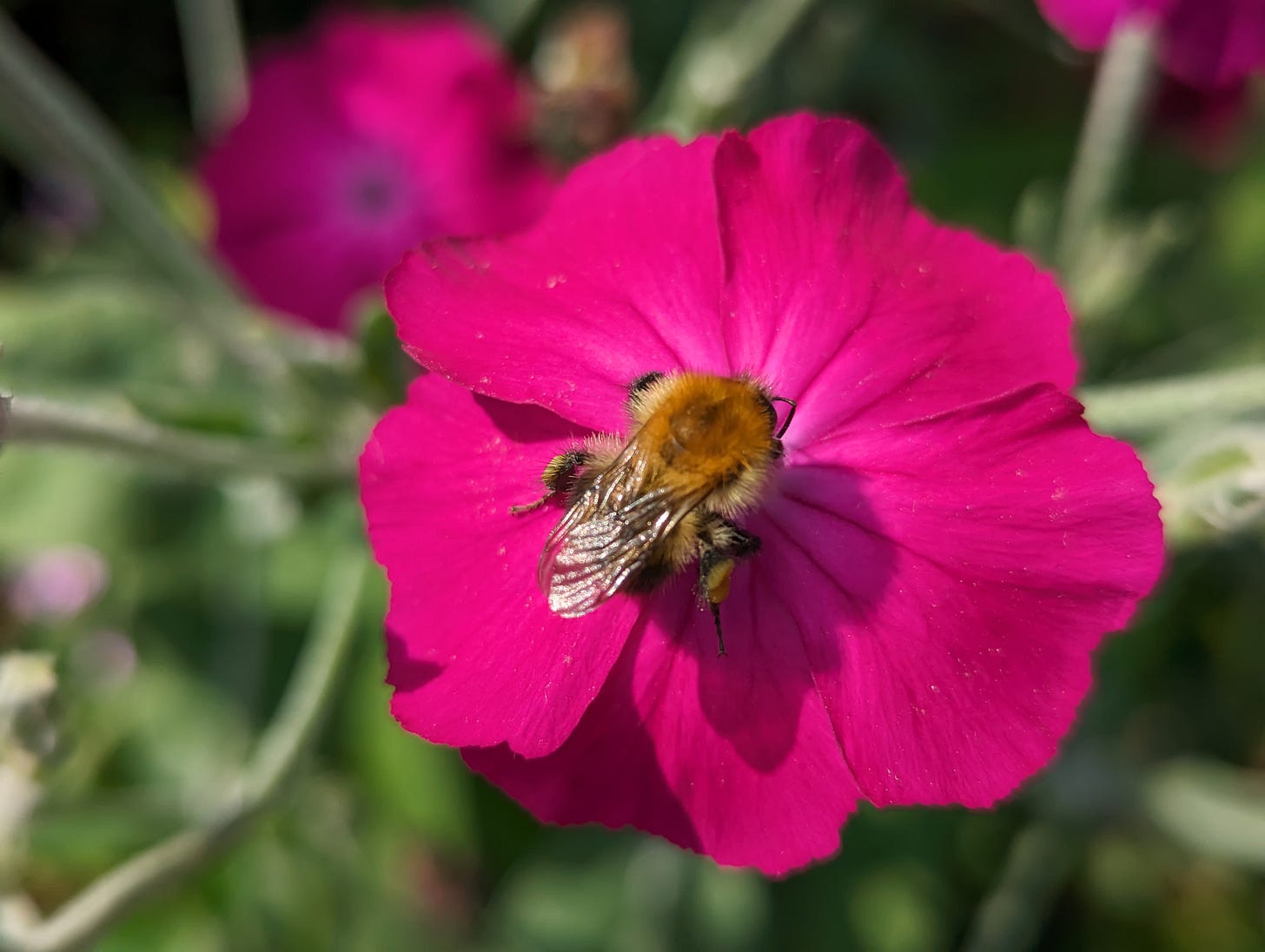
I had no idea red campion were edible and your description of preparing and eating them sounds delicious. I have masses of rose campion, silene coronaria. I don't suppose they are edible!